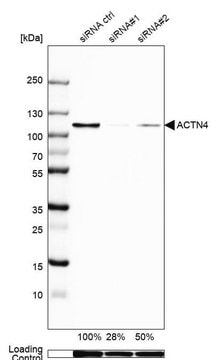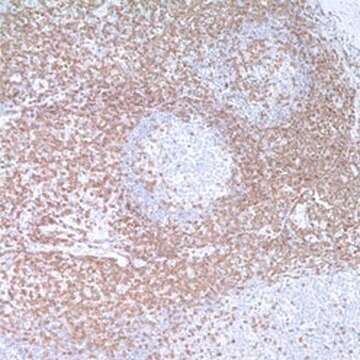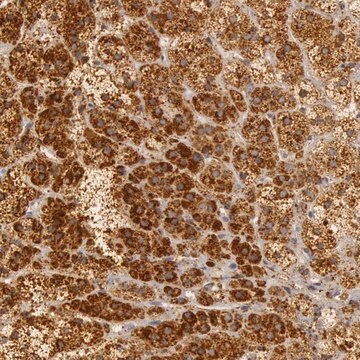MABF2050
Anti-Peripheral Node Addressin (PNAd) Antibody, clone MECA-79
clone MECA-79, from rat
Sinonimo/i:
Peripheral Node Addressin, MECA-79, CD62L-ligand (PNAd)
About This Item
Prodotti consigliati
Origine biologica
rat
Livello qualitativo
Forma dell’anticorpo
purified immunoglobulin
Tipo di anticorpo
primary antibodies
Clone
MECA-79, monoclonal
Reattività contro le specie
human, mouse
tecniche
flow cytometry: suitable
immunohistochemistry: suitable (paraffin)
immunoprecipitation (IP): suitable
western blot: suitable
Isotipo
IgMκ
Condizioni di spedizione
ambient
modifica post-traduzionali bersaglio
unmodified
Descrizione generale
Specificità
Immunogeno
Applicazioni
Western Blotting Analysis: A representative lot detected Peripheral Node Addressin (PNAd) in Western Blotting applications (Hemmerich, S., et. al. (1994). J Exp Med. 180(6):2219-26).
Inhibition Analysis: A representative lot detected Peripheral Node Addressin (PNAd) in Inhibition applications (Streeter, P.R., et. al. (1988). J Cell Biol. 107(5):1853-62;Michie, S.A., et. al. (1993). Am. J. Pathol. 143(6):1688-98; Berg, E.L., et. al. (1991). J Cell Biol. 114(2):343-9).
Immunoprecipitation Analysis: A representative lot detected Peripheral Node Addressin (PNAd) in Immunoprecipitation applications (Berg, E.L., et. al. (1991). J Cell Biol. 114(2):343-9).
Immunohistochemistry Analysis: A representative lot detected Peripheral Node Addressin (PNAd) in Immunohistochemistry applications (Sinha, R.K., et. al. (2006). Immunology. 119(4):461-9; Streeter, P.R., et. al. (1988). J Cell Biol. 107(5):1853-62; Michie, S.A., et. al. (1993). Am J Pathol. 143(6):1688-98).
Flow Cytometry Analysis: A representative lot detected Peripheral Node Addressin (PNAd) in Flow Cytometry applications (Sinha, R.K., et. al. (2006). Immunology. 119(4):461-9).
Inflammation & Immunology
Qualità
Immunohistochemistry Analysis: A 1:50 dilution of this antibody detected Peripheral Node Addressin (PNAd) in human tonsil tissue.
Descrizione del bersaglio
Stato fisico
Stoccaggio e stabilità
Altre note
Esclusione di responsabilità
Not finding the right product?
Try our Motore di ricerca dei prodotti.
Codice della classe di stoccaggio
12 - Non Combustible Liquids
Classe di pericolosità dell'acqua (WGK)
WGK 1
Certificati d'analisi (COA)
Cerca il Certificati d'analisi (COA) digitando il numero di lotto/batch corrispondente. I numeri di lotto o di batch sono stampati sull'etichetta dei prodotti dopo la parola ‘Lotto’ o ‘Batch’.
Possiedi già questo prodotto?
I documenti relativi ai prodotti acquistati recentemente sono disponibili nell’Archivio dei documenti.
Il team dei nostri ricercatori vanta grande esperienza in tutte le aree della ricerca quali Life Science, scienza dei materiali, sintesi chimica, cromatografia, discipline analitiche, ecc..
Contatta l'Assistenza Tecnica.








